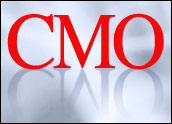
Empowering sales forces with tools to work remotely has evolved dramatically since the first wave of smartphones hit the streets. Sales reps have grown adept at basic applications such as e-mail and Web browsing, but often still wait for an end-of-day laptop session to access their CRM system. Still, Best-in-Class organizations generally yield an adoption rate of over 60 percent for mobile CRM, indicating that real value can be linked to a successful deployment of the technology.
With nearly three-quarters of surveyed companies currently or planning to deploy mobile CRM, including devoting one-fifth of overall CRM budget to mobility, ROI (return-on-investment) calculations around the value of emerging technologies prove to be positive. Research reveals that companies are increasingly turning to mobile CRM tools in order to boost sales force productivity, shorten customer response time and increase executive insight in sales activities.
Realizing Potential
Aberdeen surveyed more than 175 companies to investigate whether the adoption of a new, more robust set of mobile applications is likely to lead field personnel and organizations as a whole toward increased productivity by realizing the full potential of mobile CRM. Segmenting out the 20 percent of organizations whose sales divisions perform at the highest levels, these teams boast strong productivity metrics:
- Seventy-nine percent experience year-over-year improvement in revenue per sales rep;
- Ninety-two percent achieve a Bid-to-Win ratio better than 20 percent; and
- Sixty-nine percent achieve better than 60 percent rates of sales performance against quota.
Sales productivity itself is most frequently defined, within the context of mobile CRM engagements, as reducing downtime for field personnel and focusing more energy on high-value accounts. The most common strategies supporting the successful deployment of mobile CRM are creating an independent field rep selling environment, featuring 360-degree views of customer records, enhanced communications between headquarters and field sales staff.
The Process
Given the multinational nature of many contemporary sales organizations — and the on-demand needs of 24/7 selling cultures — achieving the ideal process capabilities for productive selling can be a daunting challenge for any VP of sales. With sales force productivity defined as a crucial business pain by all organizations more than twice as often as other pressures (65 percent against the next leading indices at 30 percent or less), we have learned that this all-important driver is attacked at the source via mobile CRM strategies that revolve around freeing up the field sales representative to accomplish more independent activity when out of the office and on customer sites.
To that effect, the leading capabilities deployed by Best-in-Class organizations include on-the-spot customer demos and pricing calculators. Top-performing firms are 33 percent more likely to focus on demo capabilities than Industry Average, and three times more often than Laggards. They also recognize the value of empowering reps to conduct on-the-spot pricing calculations: Sixty-three percent currently have or plan to deploy the capability, compared with 48 percent and 38 percent, respectively, for middle-range and low-performance sales teams. These capabilities represent a quantum leap from the “let me go check with my manager and get back to you” stalling techniques of old, and promise to enable mobile sales reps to conduct more business, gain more profit margins and become more productive in the field.
The Organization
Sales organizations are notorious for implementing organizational change when quotas are not met, often a knee-jerk response designed perhaps more to motivate than truly empower the bag-carriers on staff. Eighty-four percent of Best-in-Class selling teams, however, who currently deploy collaborative mobile CRM tools or plan to do so within the next 12 months view this more substantive organizational capability as a more concrete approach toward fixing the problem, as opposed to swapping it for a new road to the same old re-org solution.
Laggards have deployed mobile CRM-based collaboration between headquarters-based sales management and field staff, at a rate of only 24 percent. The traditional layers of organizational bureaucracy between field sales reps and HQ-based managers melt away with this capability to engage in real-time communications that support the rep’s ultimate goal: closing the deal.
Since the advent of the original on-premise CRM technologies more than a decade ago, the Holy Grail of sales operations practitioners has been the ability to capture, store and disseminate crucial customer and internal data to all relevant team members. With the confluence of mobility technologies and sophisticated CRM releases including numerous hosted models, nearly 50 percent of responding companies now offer their field reps a centralized, accessible repository of account, history, contact, task, inventory and pipeline data via mobile CRM. Best-in-Class and Industry Average performers outpace Laggards by 21 percent in this knowledge management capability; an additional 38 percent of them plan to provide it within the next 12 months.
Technology and Performance Management
What technology capabilities do sales organizations most treasure within their mobile CRM deployments? Shared team calendars, bi-directional synchronization of records between field and HQ personnel, and critical event management/notification/action features are among the key solutions deployed. Gaps between Best-in-Class and Laggard performers also include popular enablers such as on-the-fly communications access to sales management tools for price quotations, and linkage between customer records and incoming voice/e-mail functionality.
“If you can measure it, you can manage it,” is a commonly held maxim among corporate leaders. In evaluating the performance of sales organizations, today’s leading companies recognize that simply toting up revenue dollars sold will not support a holistic understanding of how to measure, manage and most importantly improve the productivity of an individual, group or entire sales matrix. Instead, Best-in-Class leaders have recognized that mobile CRM deployment assists them in more detailed analyses of field personnel downtime, time spent on high-value accounts, and resources expended on dead-end leads.
Here are some recommendations:
- Deploy bidirectional synchronization of records between field and headquarters personnel.
- Offer critical event management features to mobile CRM operations.
- Executive dashboards, and the insight they provide into field sales activity, promise to be a highly adopted enabler.
- Sponsor on-the-fly access to sales management regarding price quotations.
Peter Ostrow is vice president and director of the customer management group at the Aberdeen Group. He can be reached at [email protected].
















































